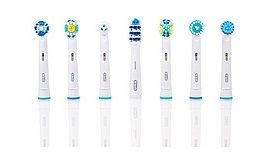The Ultimate Guide to Soothing Dental Implant Pain: Tips, Tricks, and a Spoonful of Comfort
Ah, dental implants—the modern marvels of dentistry that promise to restore your smile and biting prowess. But, as with all good things, there’s a catch: the dreaded post-procedure discomfort. Fear not, brave dental warrior, for you’re not destined to suffer in silence. Here’s your comprehensive guide to battling the beast of dental implant pain and emerging victorious, armed with nothing but your toothbrush and an indomitable spirit.
Understanding the Beast: Why Does My Implant Hurt?
First off, a bit of empathy for your mouth’s plight. Undergoing dental implant surgery is no small feat. It involves drilling into the jawbone and, well, screwing in a new tooth. Sounds fun, right? Post-surgery, it’s normal to experience some pain, swelling, and bruising as your body says, “Hey, what’s this new thing doing in my bone?” But fear not—this is all part of the healing process.
Arsenal of Relief: Tools to Combat Pain
- Embrace the Ice Age: Swelling is the root of much of your discomfort. Applying an ice pack to the cheek near the affected area can work wonders. 20 minutes on, 20 minutes off, and you’re on your way to numbing the pain and reducing swelling.
- Painkillers: Choose Your Weapons Wisely: Over-the-counter pain medication like ibuprofen (Advil) or acetaminophen (Tylenol) can be effective allies. However, always follow your dentist’s advice, as they might prescribe something stronger or advise based on your medical history.
- Saltwater Rinse: The Healing Seas: Once you’re 24 hours post-surgery, a gentle saltwater rinse can be a soothing ritual. Mix a teaspoon of salt in a cup of warm water and gently swish it around your mouth. This concoction is a natural disinfectant and can aid the healing process.
- Soft Serve Diet: Stick to soft foods that don’t require a WWE match with your teeth to consume. Think soups, yogurts, and the universally loved ice cream (within reason, of course). Avoid hot foods and drinks for the first few days, as they can exacerbate swelling.
- Rest: Your Best Defense: In the age of “go, go, go,” taking it easy might seem like a foreign concept. But rest is crucial for healing. Elevate your head with extra pillows to reduce swelling and try to avoid any strenuous activity for a few days.
- Oral Hygiene: Keep the Battlefield Clean: You might be tempted to give the surgical site the cold shoulder, but maintaining oral hygiene is key to preventing infection. Brush gently around the area, and if your dentist recommends it, use a special mouthwash to keep things clean without irritating the site.
- No Smoking or Drinking Alcoholic Beverages: These are not your friends during the healing process. Smoking can hinder healing, and alcohol can interfere with any medications you’re taking.
When to Sound the Alarm: Signs You Need to Call Your Dentist
While discomfort is part of the healing journey, some signs warrant a call to your dentist, including:
- Persistent or worsening pain after the first few days
- Signs of infection (excessive swelling, pus, fever)
- The implant feels loose or shifts
Embracing the Journey: A Final Word of Comfort
Undergoing dental implant surgery is a significant step towards restoring your dental health and confidence in your smile. While the path to recovery may have its discomforts, remember that this is temporary. With the right care, both self-administered and professional, you’ll soon be back to biting into life’s metaphorical apples with gusto.
So arm yourself with these tips, keep your dentist on speed dial, and march forth into recovery with the assurance that pain is but a fleeting shadow on the journey to a brighter, fuller smile.
